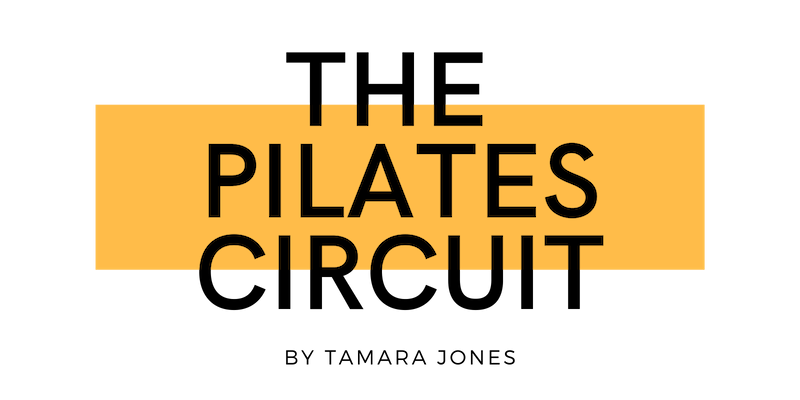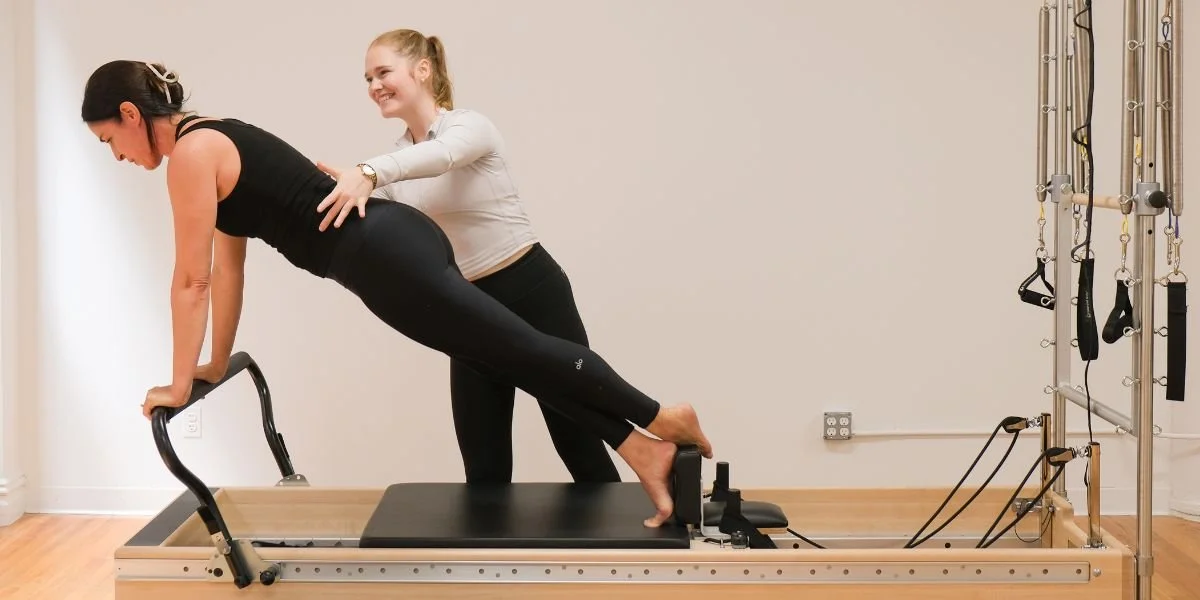3 Pilates Reformer Core Exercises That Build Greater Stability
If you’ve ever wondered why your core feels engaged in Pilates before you’ve even started moving, you’re about to understand why. Pilates is designed to wake up the deep stabilizing muscles most workouts skip over, and the reformer takes that intention and sharpens it. With the spring tension, moving carriage, and the way every exercise demands precision, pilates reformer core exercises build strength that shows up in your posture, your balance, and the way your body feels during everyday life.
Before you get into the specific movements below, here’s what actually makes the reformer such a powerful tool for real core training—and how to get the most out of each rep.
Stability Is Strength: Why Your Core Needs More Than Crunches
Crunches are fine—until you realize your core is more than your abs. Real stability comes from muscles that wrap around your spine, ribs, and hips like an internal corset. When those muscles learn to fire together, everything you do—walk, stand, twist, lift—feels steadier, lighter, more intentional.
How True Core Power Starts With Control and Awareness
It’s not about how many reps you can do; it’s about how aware you are while doing them. Pilates teaches you to feel your center activate before you even move.
That split-second of control—called neuromuscular awareness—is the foundation of true strength. Once your brain connects to your deep stabilizers (hello, transverse abdominis), your entire body moves differently.
Why Pilates Reformer Core Exercises Work Better Than Traditional Ab Work
The Reformer looks intimidating until you realize it’s basically your core’s favorite accountability partner. Unlike floor exercises, which rely on momentum, the Reformer demands control.
Springs create resistance both ways—forcing you to engage muscles through every inch of movement. It’s not about more effort; it’s about smarter effort.
The Science of Resistance, Balance, and Precision
Here’s the nerdy truth: resistance training increases muscle fiber recruitment and stability training improves proprioception—the brain’s map of your body in space.
Pilates merges both. Every controlled press, pull, and hold teaches your body to stabilize under dynamic load.
Translation: you build strength that actually transfers to real life.
The 3 Pilates Reformer Core Exercises for Greater Stability
These aren’t your average ab moves—they’re a full conversation between your breath, balance, and deep core system.
#1) Reformer Plank Press: Build Strength You Can Feel From Head to Toe
The carriage moves; you don’t—at least not much. That’s the point.
This move fires up your shoulders, glutes, and deep abdominals while teaching you to resist movement. It’s the definition of strength through stillness.
#2) Knee-Fold to Teaser Flow: Move With Grace, Strength, and Precision
It looks graceful, but your abs will absolutely call you out. The flow teaches spinal articulation and control—rolling up one vertebra at a time—while maintaining deep core tension.
It’s both strength and poise, all in one long, exhale-heavy movement.
#3) Side Plank With Foot Strap: Challenge Balance and Fire Up Deep Core Muscles
The asymmetry is the magic. One side stabilizes while the other lengthens, and suddenly your obliques are doing overtime.
It’s an exercise in balance, control, and the kind of endurance that builds from the inside out.
How to Use These Exercises in Your Routine for Real Results
Start with one or two Reformer core exercises per session, focusing on control and breath rather than intensity. As your awareness deepens, increase resistance and range—but never rush.
Progress in Pilates is subtle but accumulative; your spine will tell you when it’s working.
Finding the Right Frequency and Progression for Your Body
Two to three times a week is the sweet spot for most bodies. Alternate between core-focused sessions and full-body Reformer work. The goal isn’t exhaustion—it’s connection. Strength without strain.
The Real Takeaway: Stability You Can Feel Beyond the Studio
Pilates doesn’t just make you stronger—it changes how you hold yourself in the world. When your center is stable, you move with confidence.
You stand taller, breathe deeper, and your body feels like it’s finally working with you, not against you.
Training for Everyday Movement, Posture, and Confidence
The real shift here is learning to see your core as the system that organizes every movement you make, not just the part that gets tired first. The 3 pilates reformer core exercises you have just worked through are a starting point for that shift, a way to practice strength that feels integrated instead of isolated.
As you repeat them, the real work is noticing how you breathe, how you initiate each movement, and how your body reacts when you choose control over rushing. The more you treat that attention as part of your training, the more your posture, balance, and everyday movement start to feel steadier and less reactive.
When that happens, core work stops being a chore on your list and becomes a quiet skill you carry with you, one that keeps paying off every time you ask your body to do something hard.
If you’re ready to build strength with guidance that’s personal and grounded in how your body actually moves, you can train with us through private 1x1 Pilates in New York and experience what focused, one-on-one work can do for your core stability and overall confidence.
You can choose to work from our Chelsea Private Pilates Studio or our NOMAD Pilates Studio, where every session is quiet, supportive, and built entirely around you.
Begin your TPC Pilates journey with a personalized $125 Body Assessment session—complete with a studio tour, goal-driven consultation, tailored movement evaluation, and a customized wellness roadmap designed exclusively for you.
Frequently Asked Questions
How Often Should I Practice Pilates Reformer Core Exercises?
Most clients see results with two to three sessions a week. It’s about consistency, not intensity. The more you show up, the more your body learns to move as one unit.
Can These Exercises Improve Posture and Reduce Back Pain?
Yes—by strengthening the deep stabilizers that support your spine, Pilates can relieve pressure on overworked back muscles. Many chronic pain issues start from weakness, not overuse.
What’s the Best Way to Know My Core Stability Is Improving?
You’ll notice it in the small moments: standing in line without shifting your weight, carrying groceries with ease, or realizing your lower back doesn’t ache anymore. Stability isn’t flashy—it’s freedom in motion.


